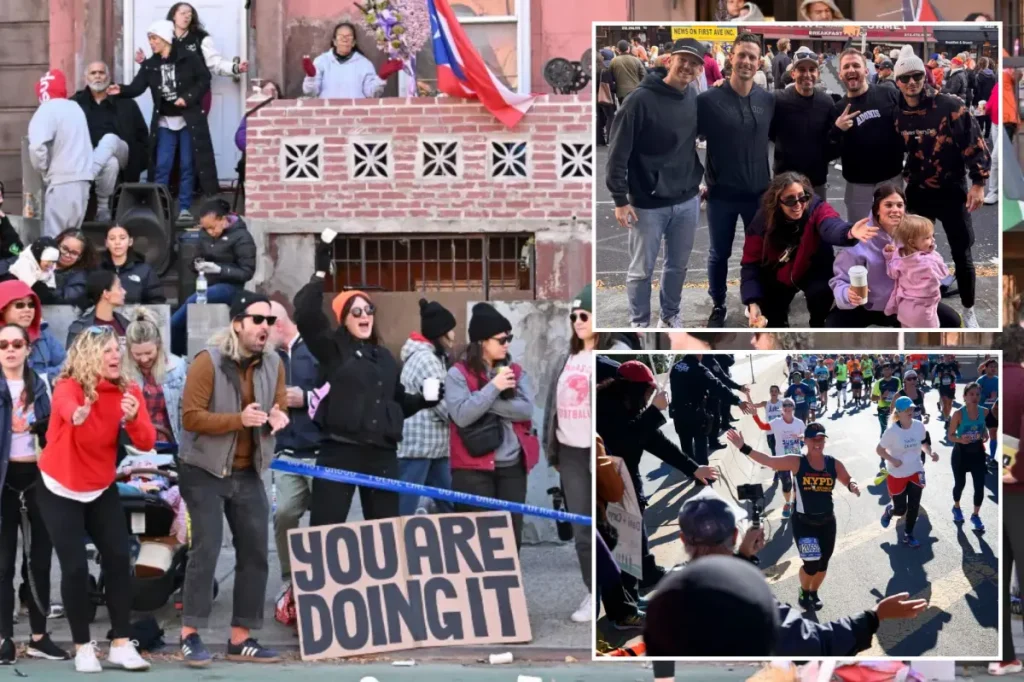A Day in the Life of Marathon Spectators: The Unsung Heroes of NYC’s Greatest Race
In the crisp early morning air of New York City, Lauren Rutkowski rises with a purpose that has nothing to do with running 26.2 miles. The 34-year-old Brooklynite begins her ritual with carb-loading on bagels near her Cobble Hill home before navigating the subway system to secure her cherished spot near Central Park. Rutkowski isn’t training for the TCS New York City Marathon—she’s perfecting the art of watching it. She joins an impressive crowd of 2 million spectators who line the five-borough route to cheer on a record-breaking 55,000 runners from around the globe. “There’s something so wonderful and community-based about marathon day,” Rutkowski explains with genuine enthusiasm. “Everyone is happy for everyone else, and you see all of the best parts of New York.” For her and countless other superfans, marathon Sunday represents a rare moment when New Yorkers put aside their differences and unite in collective support of strangers pursuing an extraordinary goal.
Marathon spectating has its own culture, complete with traditions and strategies that dedicated fans develop over years of attendance. Rachel Naurath, a 33-year-old Boerum Hill resident, rises at 6:30 a.m. to secure coffee before “posting up with enough time to catch the first waves” at her favorite viewing location near Fourth Avenue and Baltic Street. What began as a chance encounter in 2020—when she nearly yelled out her window at the commotion before realizing what day it was—has evolved into an annual hosting tradition. “The marathon makes me so proud to be a New Yorker,” Naurath reflects. “It reminds me what a gift it is to be a part of this crazy community.” She now arrives prepared with blank posters, Sharpies, and bagels for her friends, embracing what she jokingly describes as her job: “to be happy and engaged (and possibly a little drunk).” Her story echoes a common sentiment among marathon spectators—the day isn’t just about witnessing athletic achievement, but about experiencing a rare moment of citywide communion.
For spectating veterans, choosing the perfect viewing spot involves strategic planning worthy of the runners themselves. Bobby Westside, a 34-year-old Gramercy Park resident, has his marathon viewing down to a science. He favors mile markers 16/17, just after runners cross the Queensboro Bridge back into Manhattan. “It’s that critical make-or-break moment in the race where they’re back on Manhattan soil and need to push for the final 10 miles,” explains Westside, who travels by scooter between viewing locations, step stool in tow to elevate himself above the crowd. Tom Fenninger, 32, similarly champions the Queensboro Bridge exit point: “When you get off, you just hear this roar of people lined up on First Avenue. At this point in the race, spectators have had their mimosas from brunch and are lit.” These experienced fans understand the emotional geography of the marathon—knowing precisely where and when runners need the most encouragement as they navigate not just physical exhaustion but mental challenges that threaten to derail their achievement.
The psychological impact of spectator support cannot be overstated, according to experts. Dr. Jonathan Jenkins of Massachusetts General Hospital explains that for many runners, “the cheers [from the spectators] drown out the negative voices.” The marathon represents both a physical and mental challenge, with runners battling internal doubts throughout the grueling course. “The more time a runner can spend in the moment, the fewer opportunities for anxiety and doubt to turn a great challenge into 26.2 miles of angst,” Jenkins notes. While not every supportive shout will resonate with every runner, the cumulative effect of thousands of strangers offering genuine encouragement creates a powerful psychological boost. These momentary connections—a smile, a high-five, a personalized sign—remind exhausted competitors that they’re part of something larger than their individual journey, connected to both friends and strangers through their shared humanity and determination.
The marathon transforms not just the streets but the businesses that line them, creating a daylong celebration that powers local establishments. Tim Hansberry, co-owner of Upper East Side pub The Sefton, describes marathon Sunday as incomparable: “People from all over New York, the U.S.—even all over the world—pass through.” His establishment stays packed from morning through afternoon, with Guinness flowing steadily alongside trendy hard seltzers. Just a block away on Second Avenue, The Supply House prepares for the influx with a DJ, full staff, and plenty of breakfast burgers and craft beers. “We see lots of families who have come to see their family members run early in the day,” explains Robbie Gillin, the managing partner. “They grab some food and drink after watching their runner pass Mile 18 and then head over to the Central Park finish line.” The economic ripple effect of the marathon extends far beyond race registration fees, creating a surge of business that restaurants and bars eagerly anticipate each year.
Perhaps the most beautiful aspect of the New York City Marathon is how it brings the sprawling metropolis together through shared tradition and mutual respect. For twelve years, The Supply House has maintained a touching ritual: when a marathon finisher enters wearing their medal and foil jacket, the entire establishment erupts in applause, and their first post-race drink is complimentary. This gesture encapsulates the spirit of the day—a celebration not just of athletic achievement but of human perseverance and community support. As two million spectators gather across five boroughs, something remarkable happens to a city often characterized by its hurried individualism. For one day, New Yorkers slow down, look around, and cheer for strangers. They make signs for people they’ve never met, offer water to those in need, and create a 26.2-mile corridor of encouragement that represents the city at its finest. The marathon reminds everyone involved—runners, spectators, business owners, and even casual observers—that beneath New York’s tough exterior beats a generous, communal heart that shows itself most clearly when celebrating others’ triumphs.


